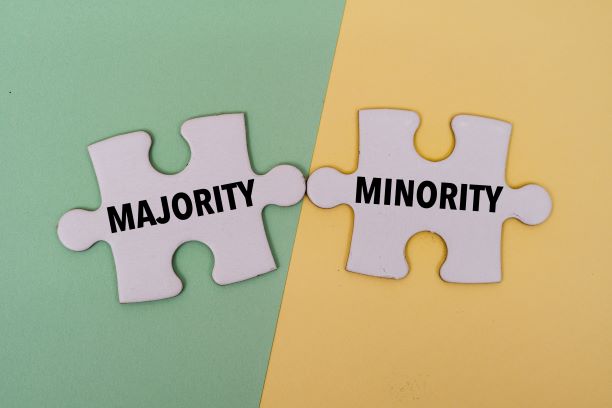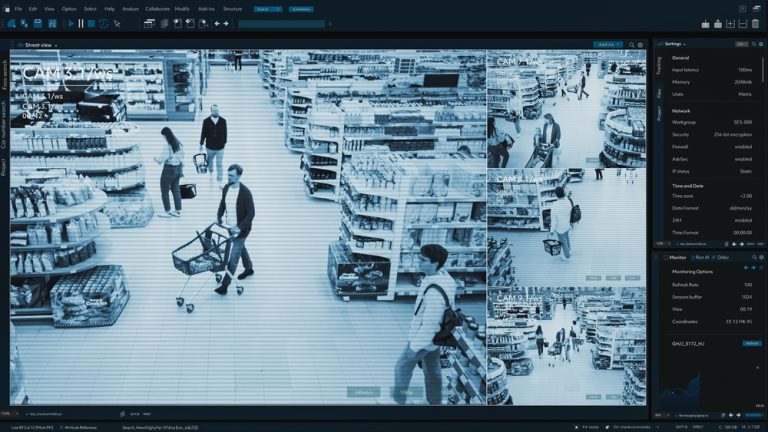Connecting in a Disconnected Legal World—One Mid-Level Associate’s Guide to Surviving the Pandemic
Connecting in a Disconnected Legal World—One Mid-Level Associate’s Guide to Surviving the Pandemic
Practicing law as a mid-level associate has changed, however, and we must continue to adapt. Intra-office contact has changed. Networking has definitely changed. But adapting to the pandemic by finding new ways to connect (or to work around the disconnections) is ultimately what will keep us afloat.

Six months ago, we went home. So did our colleagues, roommates, spouses, and kids—and life as a mid-level associate got really interesting. If you’re like me, your refuge away from the office became your office. And your spouse’s office. And your kids’ daycare, school and playground. All the day-to-day, heretofore compartmentalized parts of our lives were tossed into the same pool to sink or to swim together.
By the end of the decade that was March 2020, we had to adapt. For me, that meant adjusting my work routine to supervise third-grade math assignments while consulting my wife’s master schedule to determine when I might feasibly plan a 20-minute video-conference without getting zoom-bombed by the two-year-old. Somewhere in all this, I also had to keep up with a heavy case load and continue to develop valuable relationships with clients and colleagues faced with very similar circumstances.
Maintaining Professional Interactions Is Key
Six months ago, the idea of juggling this for as long as we have been juggling was unthinkable. Six months later, as offices and schools begin to reopen and we continue to define a “new normal,” we have survived. Practicing law as a mid-level associate has changed, however, and we must continue to adapt. Intra-office contact has changed. Networking has definitely changed. But adapting to the pandemic by finding new ways to connect (or to work around the disconnections) is ultimately what will keep us afloat.
The first things I missed while working from home were all the important professional interactions that, until recently, I probably took for granted. No more greeting staff members at their desks or in the hall. No poking my head into a partner’s office to touch base or get new assignment. No spontaneous after-work get-togethers with colleagues. Whether working from home or operating under new social distancing guidelines in the office, the happenstance of hallway networking simply isn’t what it used to be. For a mid-level associate dependent on partners for work, this could cause problems.
Before the pandemic, I could poke my head into a partner’s office to touch base on active cases and assignments, and I would use the opportunity to ask for new assignments or advice. A partner might see me and suddenly remember a project that she needed help with. Since March, these contacts have almost completely disappeared, or rather they have changed. Now, my contact with partners is more intentional, which presents new opportunities.
Be Proactive and Confident in Your Skills
At the beginning of the pandemic, I had perhaps too many phone calls and emails from partners checking on my health and my case load, making sure I was ok and had enough to do. But these contacts gradually dwindled as partners adjusted to their own “new normal.” They were also dealing with the administrative nightmare of managing a law firm remotely, plus adapting the services they provide to clients who were adjusting to the pandemic themselves. With these added responsibilities, partners needed me to be even more self-sufficient and proactive.
To be sure, as an associate at any level, it is never a good idea to wait to be told what to do. As a mid-level associate with a large case load during a pandemic, being proactive is a critical necessity. Generally, I am diligent in keeping up with cases and developing a strategy to move them through the litigation process on my own. Doing so while teaching kids in a house that now regularly looks like day six of a poltergeist invasion was a new experience. It was also an important one in my development as a confident lawyer. Before, I was competent, but still vaguely dependent on partners’ validation of my case strategy. In the chaotic isolation of my home, I simply did not have time for second-guessing and crutch-leaning. Instead of bouncing preliminary plans for a motion or discovery off a partner, I found I was making more decisions about case strategy and outlining a full plan of execution that I could provide to my partner for approval. In other words, the isolation of the pandemic acted as a sort of catalyst for my professional development that might have taken slightly longer if I still had instant access to my coworkers.
Virtual Professional Networking: Turn on Your Webcam and Be Present
Professional networking, on the other hand, did not come as naturally – or as necessarily – as learning to work more efficiently. As any lawyer knows, successful network building is, to borrow from Woody Allen, at least 80 percent showing up. But how do you “show up” responsibly during a global pandemic? With in-person networking generally on hold for the foreseeable future, effective networking also now has to be deliberate.
Of course, some aspects of professional networking will always be deliberate, but there are new challenges posed by COVID -19. Countless seminars and conferences for continuing legal education (CLE) were already available online before the pandemic, and many in-person seminars quickly adapted to a virtual format as well. Even local bar association meetings have gone remote, as our new business cards mock us from atop stacks of flyers advertising beach-destination events. More importantly, the invaluable, passive networking opportunities available at in-person events have all but disappeared. You won’t be palming business cards to new contacts between break-out sessions this year. Instead, you have to turn on your webcam (and please put on a shirt) and find opportunities to introduce yourself.
This can be a daunting task if, like me, you are a mild introvert and network better in small groups. Now, virtual mingling involves speaking to a 5-millimeter lens to everyone in attendance, sometimes with your face automatically blown up to let everyone know who is speaking. This is terrifying, but it is also a unique way to truly “show up” that you won’t get at most in-person events – unless you are presenting. In the few CLEs and conferences I have attended, I have probably gotten more facetime with new colleagues than at all my previous CLE and conferences combined, just by asking questions and having my face visible on the screen.
Surprisingly, I have also noticed that many associates (and some partners) do not even turn on their cameras during virtual conference sessions. In one CLE I attended last month, a judge leading a break-out panel discussion noticed this and commented: “If your camera’s not on, you may as well not be here.” While waiting for others to join, the judge acknowledged some attendees she knew, but also made small talk with several new faces she had not seen before at the annual conference. This was the closest thing to water-cooler networking I have seen since the pandemic started, and half the attendees completely missed out because they did not have a face. As we return to the offices, it is important to remember that, even though we are becoming less isolated, we are still disconnected for the foreseeable future. For mid-level associates this doesn’t have to be a bad thing, but you have to continue to find ways to connect, and for now, it has to be deliberate.
Reprinted with permission from the October 12, 2020 edition of The Mid-Market Report © 2020 ALM Media Properties, LLC. All rights reserved. Further duplication without permission is prohibited, contact 877-257-3382 or reprints@alm.com.






